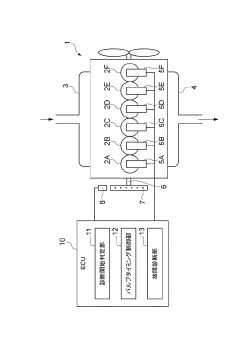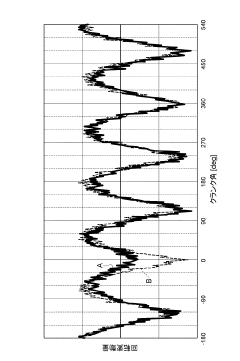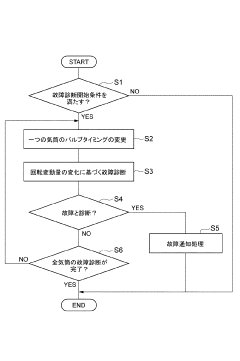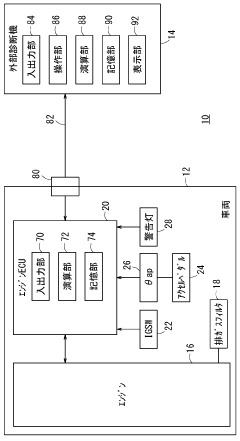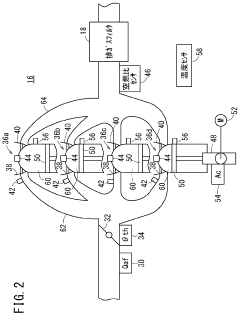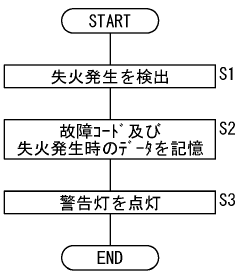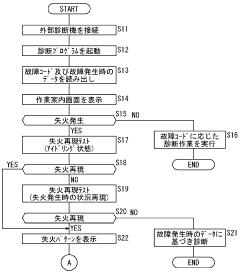Diagnosing V8 Engine Faults: Expert Techniques
JUL 4, 20259 MIN READ
Generate Your Research Report Instantly with AI Agent
Patsnap Eureka helps you evaluate technical feasibility & market potential.
V8 Engine Diagnostics Background and Objectives
V8 engines have been a cornerstone of automotive engineering since their inception in the early 20th century. These powerful and efficient engines have evolved significantly over the decades, becoming more complex and sophisticated. As a result, diagnosing faults in V8 engines has become an increasingly specialized field, requiring advanced knowledge and techniques.
The primary objective of V8 engine diagnostics is to accurately identify and resolve issues that affect engine performance, efficiency, and longevity. This process involves a comprehensive understanding of engine mechanics, electronic systems, and the intricate interplay between various components. Expert technicians must be able to interpret a wide range of symptoms and data to pinpoint the root cause of problems.
The evolution of V8 engine technology has been driven by several factors, including the need for improved fuel efficiency, reduced emissions, and enhanced performance. This has led to the integration of advanced electronic control systems, direct fuel injection, variable valve timing, and turbocharging technologies. Consequently, diagnostic techniques have had to keep pace with these advancements, incorporating sophisticated electronic tools and software-based analysis methods.
One of the key trends in V8 engine diagnostics is the increasing reliance on computerized diagnostic systems. These systems can quickly analyze vast amounts of data from multiple sensors throughout the engine, providing technicians with detailed information about engine performance and potential issues. This shift towards data-driven diagnostics has significantly improved the accuracy and efficiency of fault identification.
Another important aspect of modern V8 engine diagnostics is the focus on predictive maintenance. By analyzing patterns in engine performance data, experts can often identify potential problems before they lead to major failures. This proactive approach helps to reduce downtime and extend the overall lifespan of the engine.
The field of V8 engine diagnostics continues to evolve, with emerging technologies such as artificial intelligence and machine learning beginning to play a role. These technologies have the potential to further enhance diagnostic accuracy and speed, by recognizing complex patterns and correlations that might be missed by human technicians.
As we look to the future, the goals of V8 engine diagnostics are likely to focus on even greater precision, faster problem resolution, and improved integration with other vehicle systems. This will require ongoing development of diagnostic tools and techniques, as well as continuous training for technicians to keep up with the rapidly advancing technology.
The primary objective of V8 engine diagnostics is to accurately identify and resolve issues that affect engine performance, efficiency, and longevity. This process involves a comprehensive understanding of engine mechanics, electronic systems, and the intricate interplay between various components. Expert technicians must be able to interpret a wide range of symptoms and data to pinpoint the root cause of problems.
The evolution of V8 engine technology has been driven by several factors, including the need for improved fuel efficiency, reduced emissions, and enhanced performance. This has led to the integration of advanced electronic control systems, direct fuel injection, variable valve timing, and turbocharging technologies. Consequently, diagnostic techniques have had to keep pace with these advancements, incorporating sophisticated electronic tools and software-based analysis methods.
One of the key trends in V8 engine diagnostics is the increasing reliance on computerized diagnostic systems. These systems can quickly analyze vast amounts of data from multiple sensors throughout the engine, providing technicians with detailed information about engine performance and potential issues. This shift towards data-driven diagnostics has significantly improved the accuracy and efficiency of fault identification.
Another important aspect of modern V8 engine diagnostics is the focus on predictive maintenance. By analyzing patterns in engine performance data, experts can often identify potential problems before they lead to major failures. This proactive approach helps to reduce downtime and extend the overall lifespan of the engine.
The field of V8 engine diagnostics continues to evolve, with emerging technologies such as artificial intelligence and machine learning beginning to play a role. These technologies have the potential to further enhance diagnostic accuracy and speed, by recognizing complex patterns and correlations that might be missed by human technicians.
As we look to the future, the goals of V8 engine diagnostics are likely to focus on even greater precision, faster problem resolution, and improved integration with other vehicle systems. This will require ongoing development of diagnostic tools and techniques, as well as continuous training for technicians to keep up with the rapidly advancing technology.
Market Demand for Advanced V8 Engine Diagnostics
The market demand for advanced V8 engine diagnostics has been steadily increasing in recent years, driven by several key factors. As vehicles become more complex and technologically advanced, the need for sophisticated diagnostic tools and techniques has grown exponentially. V8 engines, known for their power and performance, are particularly prevalent in high-end vehicles, sports cars, and heavy-duty trucks, creating a significant niche market for specialized diagnostic solutions.
One of the primary drivers of this demand is the automotive industry's shift towards more efficient and environmentally friendly engines. Modern V8 engines incorporate advanced technologies such as direct injection, variable valve timing, and cylinder deactivation. These innovations, while improving performance and fuel economy, also introduce new complexities in diagnosing and troubleshooting engine faults. As a result, there is a growing need for diagnostic tools that can accurately identify and analyze issues specific to these advanced V8 engine systems.
The aftermarket automotive sector has also contributed significantly to the increased demand for V8 engine diagnostics. As vehicles age and warranties expire, many owners turn to independent repair shops for maintenance and repairs. These shops require access to advanced diagnostic tools to compete with dealership service centers, driving the market for sophisticated V8 engine diagnostic equipment and software.
Furthermore, the rise of connected car technologies and onboard diagnostics has created new opportunities in the V8 engine diagnostic market. Remote diagnostics and predictive maintenance capabilities are becoming increasingly important, allowing for real-time monitoring of engine performance and early detection of potential issues. This trend has led to the development of cloud-based diagnostic platforms and mobile applications specifically designed for V8 engines.
The commercial vehicle sector, particularly in the trucking industry, has also shown a strong demand for advanced V8 engine diagnostics. Fleet operators are increasingly focused on minimizing downtime and optimizing vehicle performance, creating a need for robust diagnostic solutions that can quickly identify and resolve engine issues. This has led to the development of specialized diagnostic tools tailored to the unique requirements of commercial V8 engines.
In terms of market size, the global automotive diagnostic scan tools market, which includes V8 engine diagnostics, is projected to experience substantial growth. This growth is attributed to the increasing complexity of vehicle electronics, stringent emission norms, and the rising adoption of electric and hybrid vehicles, which often utilize V8 engines in high-performance models.
One of the primary drivers of this demand is the automotive industry's shift towards more efficient and environmentally friendly engines. Modern V8 engines incorporate advanced technologies such as direct injection, variable valve timing, and cylinder deactivation. These innovations, while improving performance and fuel economy, also introduce new complexities in diagnosing and troubleshooting engine faults. As a result, there is a growing need for diagnostic tools that can accurately identify and analyze issues specific to these advanced V8 engine systems.
The aftermarket automotive sector has also contributed significantly to the increased demand for V8 engine diagnostics. As vehicles age and warranties expire, many owners turn to independent repair shops for maintenance and repairs. These shops require access to advanced diagnostic tools to compete with dealership service centers, driving the market for sophisticated V8 engine diagnostic equipment and software.
Furthermore, the rise of connected car technologies and onboard diagnostics has created new opportunities in the V8 engine diagnostic market. Remote diagnostics and predictive maintenance capabilities are becoming increasingly important, allowing for real-time monitoring of engine performance and early detection of potential issues. This trend has led to the development of cloud-based diagnostic platforms and mobile applications specifically designed for V8 engines.
The commercial vehicle sector, particularly in the trucking industry, has also shown a strong demand for advanced V8 engine diagnostics. Fleet operators are increasingly focused on minimizing downtime and optimizing vehicle performance, creating a need for robust diagnostic solutions that can quickly identify and resolve engine issues. This has led to the development of specialized diagnostic tools tailored to the unique requirements of commercial V8 engines.
In terms of market size, the global automotive diagnostic scan tools market, which includes V8 engine diagnostics, is projected to experience substantial growth. This growth is attributed to the increasing complexity of vehicle electronics, stringent emission norms, and the rising adoption of electric and hybrid vehicles, which often utilize V8 engines in high-performance models.
Current Challenges in V8 Engine Fault Detection
The diagnosis of V8 engine faults presents several significant challenges in the current automotive landscape. One of the primary difficulties lies in the complexity of modern V8 engines, which incorporate advanced electronic control systems and intricate mechanical components. This complexity makes it increasingly challenging for technicians to isolate and identify specific faults accurately.
Another major hurdle is the vast array of potential fault sources in V8 engines. Issues can stem from mechanical wear, electrical malfunctions, fuel system problems, or even software glitches in the engine control unit (ECU). This diversity of potential causes requires a comprehensive diagnostic approach, which can be time-consuming and resource-intensive.
The integration of multiple subsystems within V8 engines further complicates the diagnostic process. A fault in one system can often manifest symptoms in another, leading to misdiagnosis or overlooked issues. For instance, a problem in the fuel injection system might present symptoms similar to those of an ignition system malfunction, requiring careful analysis to differentiate between the two.
Evolving emission standards and the introduction of new technologies to meet these standards have added another layer of complexity to V8 engine fault diagnosis. Technicians must now be well-versed in diagnosing issues related to exhaust gas recirculation (EGR) systems, variable valve timing mechanisms, and advanced fuel management systems, all of which can contribute to engine performance problems.
The increasing reliance on onboard diagnostics (OBD) systems, while beneficial in many ways, also presents challenges. OBD systems can sometimes provide misleading or incomplete information, requiring technicians to possess a deep understanding of both the OBD system and the engine's mechanical operation to interpret diagnostic codes accurately.
Furthermore, the rapid pace of technological advancements in V8 engine design means that diagnostic techniques and tools must constantly evolve. Technicians face the ongoing challenge of staying updated with the latest diagnostic methodologies and equipment, which can be both time-consuming and costly for service centers.
Lastly, the high-performance nature of many V8 engines adds another dimension to the diagnostic process. These engines often operate under extreme conditions, making it difficult to replicate and diagnose intermittent faults that may only occur under specific operating conditions. This challenge requires advanced testing procedures and sometimes specialized equipment to accurately diagnose and resolve issues.
Another major hurdle is the vast array of potential fault sources in V8 engines. Issues can stem from mechanical wear, electrical malfunctions, fuel system problems, or even software glitches in the engine control unit (ECU). This diversity of potential causes requires a comprehensive diagnostic approach, which can be time-consuming and resource-intensive.
The integration of multiple subsystems within V8 engines further complicates the diagnostic process. A fault in one system can often manifest symptoms in another, leading to misdiagnosis or overlooked issues. For instance, a problem in the fuel injection system might present symptoms similar to those of an ignition system malfunction, requiring careful analysis to differentiate between the two.
Evolving emission standards and the introduction of new technologies to meet these standards have added another layer of complexity to V8 engine fault diagnosis. Technicians must now be well-versed in diagnosing issues related to exhaust gas recirculation (EGR) systems, variable valve timing mechanisms, and advanced fuel management systems, all of which can contribute to engine performance problems.
The increasing reliance on onboard diagnostics (OBD) systems, while beneficial in many ways, also presents challenges. OBD systems can sometimes provide misleading or incomplete information, requiring technicians to possess a deep understanding of both the OBD system and the engine's mechanical operation to interpret diagnostic codes accurately.
Furthermore, the rapid pace of technological advancements in V8 engine design means that diagnostic techniques and tools must constantly evolve. Technicians face the ongoing challenge of staying updated with the latest diagnostic methodologies and equipment, which can be both time-consuming and costly for service centers.
Lastly, the high-performance nature of many V8 engines adds another dimension to the diagnostic process. These engines often operate under extreme conditions, making it difficult to replicate and diagnose intermittent faults that may only occur under specific operating conditions. This challenge requires advanced testing procedures and sometimes specialized equipment to accurately diagnose and resolve issues.
Existing V8 Engine Diagnostic Techniques
01 Engine diagnostic systems
Advanced diagnostic systems for V8 engines use sensors and data analysis to detect and identify faults. These systems can monitor various engine parameters in real-time, providing early warning of potential issues and assisting in troubleshooting. They often include features for data logging, fault code interpretation, and predictive maintenance.- Engine diagnostic systems: Advanced diagnostic systems are developed to detect and analyze V8 engine faults. These systems use sensors, data processing algorithms, and machine learning techniques to identify issues in real-time, allowing for quick troubleshooting and maintenance.
- Vibration analysis for fault detection: Vibration analysis techniques are employed to detect and diagnose V8 engine faults. By monitoring engine vibrations and comparing them to known patterns, abnormalities can be identified early, preventing potential damage and improving engine performance.
- Fuel injection system improvements: Enhancements to fuel injection systems are developed to address common V8 engine faults. These improvements focus on optimizing fuel delivery, reducing emissions, and increasing overall engine efficiency, thereby minimizing potential issues related to fuel system malfunctions.
- Cooling system fault prevention: Innovative cooling system designs and monitoring techniques are implemented to prevent overheating and related faults in V8 engines. These solutions include advanced coolant flow management, temperature sensors, and predictive maintenance algorithms.
- Engine control unit (ECU) optimization: Advancements in ECU software and hardware are made to improve V8 engine performance and reduce the likelihood of faults. These optimizations include adaptive learning algorithms, real-time adjustments, and enhanced communication with other vehicle systems.
02 Cylinder deactivation fault detection
Techniques for detecting faults in cylinder deactivation systems of V8 engines. These methods involve monitoring engine performance parameters, such as exhaust gas composition, vibration patterns, and fuel consumption, to identify issues with the cylinder deactivation mechanism. Early detection of these faults can prevent more severe engine damage and maintain fuel efficiency.Expand Specific Solutions03 Crankshaft position sensor faults
Methods for identifying and addressing faults in crankshaft position sensors of V8 engines. These sensors are critical for proper engine timing and performance. Fault detection techniques may include analyzing sensor signal patterns, comparing data from multiple sensors, and using adaptive algorithms to compensate for sensor degradation over time.Expand Specific Solutions04 Fuel injection system diagnostics
Diagnostic techniques for fuel injection systems in V8 engines, focusing on identifying issues such as clogged injectors, fuel pressure irregularities, and electronic control unit malfunctions. These methods often involve pressure testing, electrical signal analysis, and fuel consumption monitoring to ensure optimal engine performance and fuel efficiency.Expand Specific Solutions05 Vibration analysis for fault detection
Use of vibration analysis techniques to detect and diagnose V8 engine faults. This approach involves using accelerometers and advanced signal processing algorithms to identify abnormal vibration patterns associated with various engine issues, such as bearing wear, valve train problems, or misfires. The analysis can provide early warning of developing faults before they lead to more serious engine damage.Expand Specific Solutions
Key Players in V8 Engine Diagnostic Industry
The V8 engine fault diagnosis market is in a mature stage, with established players and well-developed technologies. The global market size for automotive diagnostic tools is projected to reach $49 billion by 2026, driven by increasing vehicle complexity and demand for advanced diagnostics. Technologically, the field is evolving towards more sophisticated electronic diagnostic systems, with companies like Bosch, Delphi, and Continental leading innovation. Renault, Honda, and Hyundai are leveraging their automotive expertise to develop proprietary diagnostic solutions, while specialized firms like Weichai Power focus on heavy-duty applications. Universities such as South China University of Technology and Beijing Institute of Technology contribute to R&D efforts, advancing fault diagnosis techniques through academic research and industry collaborations.
Ford Global Technologies LLC
Technical Solution: Ford has developed a comprehensive diagnostic system for their V8 engines, particularly focusing on the popular Coyote and Godzilla series. Their approach combines traditional OBD-II diagnostics with advanced machine learning algorithms and sensor fusion techniques. Ford's system utilizes a network of high-precision sensors to monitor critical engine parameters such as cylinder pressure, crankshaft position, and exhaust gas composition in real-time[10]. The data is processed through Ford's proprietary algorithms, which can identify specific fault patterns unique to V8 configurations. Ford has also incorporated acoustic analysis techniques that can detect subtle changes in engine sound to identify potential issues before they become severe. Their system is particularly adept at diagnosing issues related to variable camshaft timing and direct injection systems common in modern Ford V8 engines[12].
Strengths: Tailored for Ford V8 engines, integration with existing Ford diagnostic tools. Weaknesses: May have limited applicability to non-Ford V8 engines.
GM Global Technology Operations LLC
Technical Solution: GM has developed a proprietary diagnostic system for V8 engines, focusing on their popular LS and LT series. Their approach combines traditional OBD-II diagnostics with advanced sensor fusion techniques. GM's system utilizes a network of strategically placed sensors to monitor critical engine parameters such as cylinder pressure, crankshaft position, and exhaust gas composition[2]. The data is processed through GM's proprietary algorithms, which can identify specific fault patterns unique to V8 configurations. GM has also incorporated machine learning models that improve diagnostic accuracy over time by learning from historical fault data across their fleet[4]. Their system is particularly adept at diagnosing issues related to cylinder deactivation systems common in modern V8 engines.
Strengths: Highly specialized for GM V8 engines, continuous improvement through machine learning. Weaknesses: May have limited applicability to non-GM V8 engines.
Innovative Approaches in V8 Fault Detection
Fault diagnosis device and fault diagnosis method of internal combustion engine
PatentInactiveJP2014009658A
Innovation
- A failure diagnosis apparatus and method that selectively change the valve timing of some cylinders, using crank angle detection and variable valve devices, allowing for fault diagnosis based on changes in intake air and torque, while maintaining normal operation of other cylinders.
Fault diagnosis method, fault diagnosis system, and fault diagnosis device for engine
PatentWO2012132677A1
Innovation
- An engine failure diagnosis method that uses an external diagnostic device to communicate with the engine control device, detecting misfire patterns based on the continuity of misfire occurrence and reproducing conditions to narrow down failure sites, including compression pressure and air-fuel ratio analysis, thereby reducing man-hours and improving diagnostic efficiency.
Environmental Impact of V8 Engine Diagnostics
The environmental impact of V8 engine diagnostics is a critical consideration in the automotive industry's efforts to reduce its carbon footprint and improve sustainability. Traditional diagnostic methods for V8 engines often involve prolonged idling periods, excessive fuel consumption, and the release of harmful emissions during testing procedures. These practices contribute to increased air pollution and greenhouse gas emissions, particularly in urban areas with high concentrations of automotive repair facilities.
Advanced diagnostic techniques, such as on-board diagnostics (OBD) systems and remote diagnostics, have significantly reduced the need for extended engine running times during fault detection. These technologies allow for more efficient and environmentally friendly diagnostic processes by providing real-time data on engine performance and potential issues without requiring the engine to be in continuous operation. This reduction in diagnostic-related emissions helps mitigate the overall environmental impact of V8 engine maintenance and repair activities.
However, the production and disposal of diagnostic equipment itself present environmental challenges. The manufacturing of sophisticated diagnostic tools often involves the use of rare earth metals and other materials with significant ecological footprints. Additionally, the rapid pace of technological advancement in diagnostic equipment leads to frequent upgrades and replacements, contributing to electronic waste accumulation. Proper recycling and disposal protocols for outdated diagnostic equipment are essential to minimize the environmental impact of these tools throughout their lifecycle.
The shift towards more environmentally conscious diagnostic practices has also led to the development of eco-friendly testing fluids and cleaning agents. These products are designed to be less harmful to the environment when released, reducing soil and water contamination risks associated with traditional automotive chemicals used in V8 engine diagnostics. Furthermore, the adoption of regenerative dynamometers in engine testing facilities allows for the capture and conversion of energy produced during diagnostic procedures, potentially offsetting some of the energy consumption associated with these processes.
As the automotive industry continues to evolve, there is a growing emphasis on developing diagnostic techniques that not only accurately identify V8 engine faults but also minimize environmental impact. This includes the integration of artificial intelligence and machine learning algorithms to enhance the efficiency and accuracy of diagnostic processes, potentially reducing the need for invasive and environmentally taxing physical inspections. The future of V8 engine diagnostics lies in striking a balance between maintaining high standards of fault detection and reducing the ecological footprint of these essential maintenance activities.
Advanced diagnostic techniques, such as on-board diagnostics (OBD) systems and remote diagnostics, have significantly reduced the need for extended engine running times during fault detection. These technologies allow for more efficient and environmentally friendly diagnostic processes by providing real-time data on engine performance and potential issues without requiring the engine to be in continuous operation. This reduction in diagnostic-related emissions helps mitigate the overall environmental impact of V8 engine maintenance and repair activities.
However, the production and disposal of diagnostic equipment itself present environmental challenges. The manufacturing of sophisticated diagnostic tools often involves the use of rare earth metals and other materials with significant ecological footprints. Additionally, the rapid pace of technological advancement in diagnostic equipment leads to frequent upgrades and replacements, contributing to electronic waste accumulation. Proper recycling and disposal protocols for outdated diagnostic equipment are essential to minimize the environmental impact of these tools throughout their lifecycle.
The shift towards more environmentally conscious diagnostic practices has also led to the development of eco-friendly testing fluids and cleaning agents. These products are designed to be less harmful to the environment when released, reducing soil and water contamination risks associated with traditional automotive chemicals used in V8 engine diagnostics. Furthermore, the adoption of regenerative dynamometers in engine testing facilities allows for the capture and conversion of energy produced during diagnostic procedures, potentially offsetting some of the energy consumption associated with these processes.
As the automotive industry continues to evolve, there is a growing emphasis on developing diagnostic techniques that not only accurately identify V8 engine faults but also minimize environmental impact. This includes the integration of artificial intelligence and machine learning algorithms to enhance the efficiency and accuracy of diagnostic processes, potentially reducing the need for invasive and environmentally taxing physical inspections. The future of V8 engine diagnostics lies in striking a balance between maintaining high standards of fault detection and reducing the ecological footprint of these essential maintenance activities.
V8 Engine Diagnostic Data Analytics
V8 engine diagnostic data analytics has become an increasingly crucial aspect of modern automotive maintenance and performance optimization. With the advent of advanced sensor technologies and sophisticated onboard diagnostic systems, the volume and complexity of data generated by V8 engines have grown exponentially. This wealth of information presents both challenges and opportunities for mechanics, engineers, and data scientists alike.
The primary focus of V8 engine diagnostic data analytics is to leverage machine learning algorithms and statistical analysis techniques to identify patterns, anomalies, and trends in engine performance data. By processing and interpreting vast amounts of sensor readings, including parameters such as fuel injection timing, exhaust gas composition, and cylinder pressure, analysts can gain deep insights into engine health and efficiency.
One of the key advantages of data analytics in V8 engine diagnostics is the ability to predict potential failures before they occur. By analyzing historical data and real-time sensor inputs, predictive maintenance models can be developed to forecast component wear and system degradation. This proactive approach not only reduces downtime and repair costs but also enhances overall engine reliability and longevity.
Advanced data visualization techniques play a crucial role in making complex engine data more accessible and interpretable. Interactive dashboards and 3D modeling tools allow technicians to visualize engine performance metrics in real-time, facilitating quicker and more accurate fault diagnosis. These visual representations can highlight subtle correlations between different engine parameters that might otherwise go unnoticed in raw data sets.
The integration of artificial intelligence and machine learning algorithms has revolutionized the field of V8 engine diagnostics. Neural networks and deep learning models can be trained on vast datasets to recognize complex fault patterns and provide automated diagnostic recommendations. These AI-driven systems continuously improve their accuracy over time as they process more data, effectively augmenting the expertise of human technicians.
Data analytics also enables comparative performance analysis across different V8 engine models and operating conditions. By aggregating and analyzing data from multiple vehicles, manufacturers can identify systemic issues, optimize engine designs, and develop more effective maintenance protocols. This data-driven approach to engine development and maintenance has significant implications for improving fuel efficiency, reducing emissions, and enhancing overall vehicle performance.
As the field of V8 engine diagnostic data analytics continues to evolve, the integration of edge computing and real-time data processing capabilities is becoming increasingly important. These advancements allow for more immediate analysis and decision-making, particularly in high-performance and racing applications where split-second optimizations can make a critical difference.
The primary focus of V8 engine diagnostic data analytics is to leverage machine learning algorithms and statistical analysis techniques to identify patterns, anomalies, and trends in engine performance data. By processing and interpreting vast amounts of sensor readings, including parameters such as fuel injection timing, exhaust gas composition, and cylinder pressure, analysts can gain deep insights into engine health and efficiency.
One of the key advantages of data analytics in V8 engine diagnostics is the ability to predict potential failures before they occur. By analyzing historical data and real-time sensor inputs, predictive maintenance models can be developed to forecast component wear and system degradation. This proactive approach not only reduces downtime and repair costs but also enhances overall engine reliability and longevity.
Advanced data visualization techniques play a crucial role in making complex engine data more accessible and interpretable. Interactive dashboards and 3D modeling tools allow technicians to visualize engine performance metrics in real-time, facilitating quicker and more accurate fault diagnosis. These visual representations can highlight subtle correlations between different engine parameters that might otherwise go unnoticed in raw data sets.
The integration of artificial intelligence and machine learning algorithms has revolutionized the field of V8 engine diagnostics. Neural networks and deep learning models can be trained on vast datasets to recognize complex fault patterns and provide automated diagnostic recommendations. These AI-driven systems continuously improve their accuracy over time as they process more data, effectively augmenting the expertise of human technicians.
Data analytics also enables comparative performance analysis across different V8 engine models and operating conditions. By aggregating and analyzing data from multiple vehicles, manufacturers can identify systemic issues, optimize engine designs, and develop more effective maintenance protocols. This data-driven approach to engine development and maintenance has significant implications for improving fuel efficiency, reducing emissions, and enhancing overall vehicle performance.
As the field of V8 engine diagnostic data analytics continues to evolve, the integration of edge computing and real-time data processing capabilities is becoming increasingly important. These advancements allow for more immediate analysis and decision-making, particularly in high-performance and racing applications where split-second optimizations can make a critical difference.
Unlock deeper insights with Patsnap Eureka Quick Research — get a full tech report to explore trends and direct your research. Try now!
Generate Your Research Report Instantly with AI Agent
Supercharge your innovation with Patsnap Eureka AI Agent Platform!
